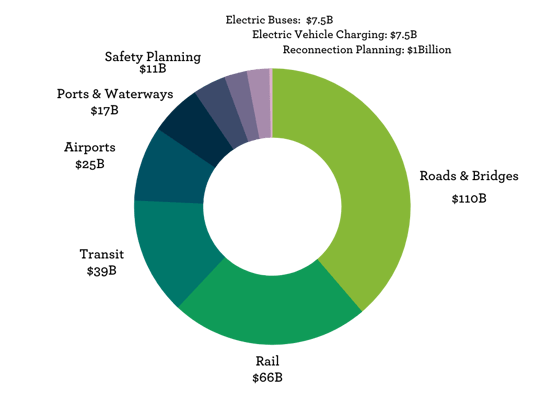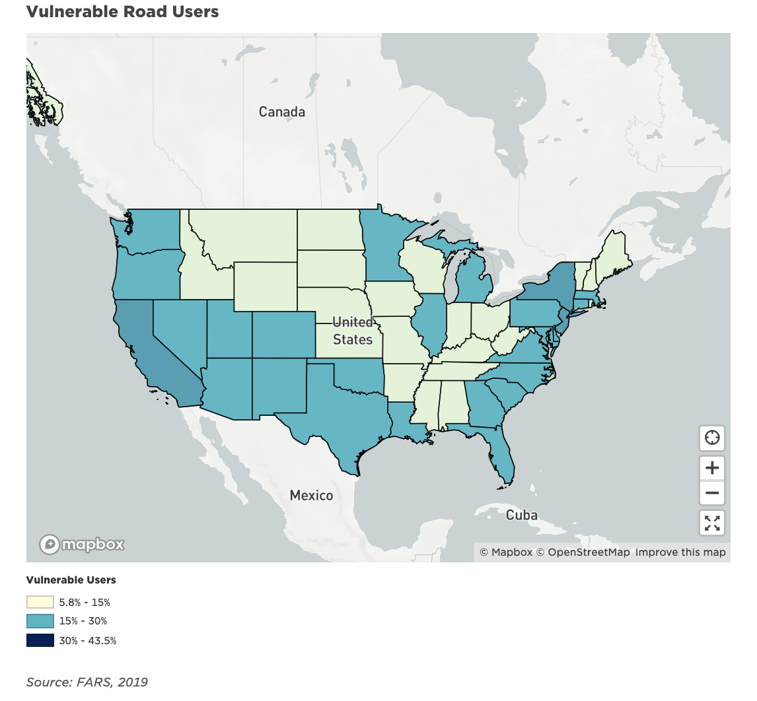Infrastructure week is finally here. How will it change transportation planning?
Last month, President Biden signed the Infrastructure Investment and Jobs Act into law. The legislation provides a significant boost to infrastructure funding levels, adding $550 billion in new spending over the next 5 years. Additionally, at the time of writing this blog post, the Build Back Better act has passed the House of Representatives. While it will likely change when it meets the Senate, it includes many things that will impact mobility, like investments in intercity high speed rail, additional investments in rail and transit capital, tax credits for electric vehicles and electric bikes, and affordable housing in transit corridors.

For some, all of this means a long list of priorities and unmet needs can finally be revisited. But it also means facing the daunting task of reevaluating project backlogs. Are they still necessary and relevant? Have community preferences and local goals changed? Do they still align with Federal policy?
Status quo, meaningful reforms, or something in between?
While new legislation maintains many business-as-usual practices, there are a number of new provisions that will impact the practices of many agencies. For example, a new provision of the Highway Safety Improvement Program is that if 15% or more of a state’s fatal collisions are from vulnerable road users, that state is required to obligate at least 15% of its allocated HSIP funds on safety projects for vulnerable road uses (that is, people that walk and bike).

Here’s a quick video showing how we used Seek and Chart to understand the impacts of this new provision (part two, below):
Even more complicated is the question of how you begin to prioritize projects. One of the great things about this new law is that it includes grant funds to do just that. The Prioritization Process Pilot Program will give Metropolitan Planning Organizations and States competitive grant funding to implement “data-driven approaches to planning…that can be evaluated for public benefit”. Outlined in Section 11204 of the IIJA, the new program will provide $10 million per year in grants to States and MPOs (up to $2 million per grant) to develop their own rating criteria for projects, based on transportation outcomes defined by long range planning criteria and national performance measures. While these funds make up less than half a percent of the total spending in the infrastructure bill, they will have an outsized impact on the way investments are made.
We’re eager to help agencies think through these challenges. Let us know what kind of data would be useful to you for prioritizing transportation projects.

Define equity in the context of your community
Understanding barriers to efficient transportation in a community starts with firmly grasping the makeup of that place. mySidewalk's access to neighborhood-level data helps to remove that barrier through targeted and relevant analyses of your community.
Determe mobility needs in the context of your community
Transportation needs vary between communities, and for individuals within communities. Building an equitable transportation system has to start with a detailed understanding of people and place. mySidewalk’s rich library of community data can help you understand those patterns in your area.
Prioritize projects offering the most community benefit
Even with increased levels of funding, resources are still limited. mySidewalk has the tools to help you assess the impact and benefit of projects to help your region focus its needs
Build a case for your project when applying for competitive infrastructure funds
A significant portion of the increase in funding will require a competitive application process. Visualizing community data can help you craft a compelling proposal that stands out.
Part two on using Seek and Chart to understand the impacts of this new provision:
Got an idea of data application for your investment in transportation? We'd love your feedback!

No Comments Yet
Let us know what you think